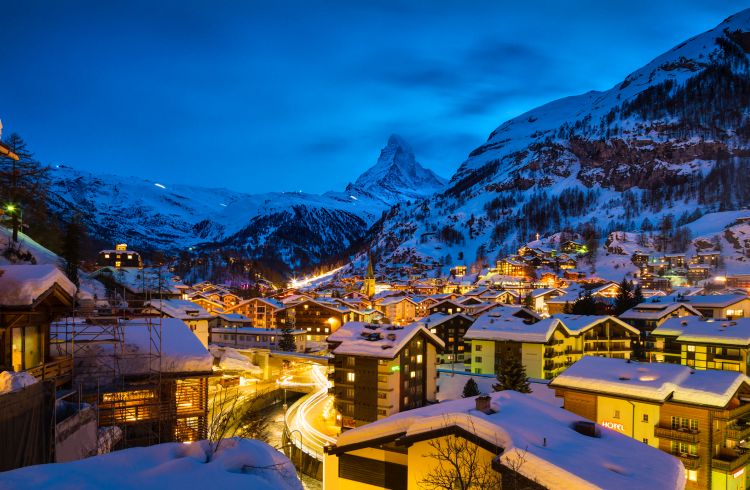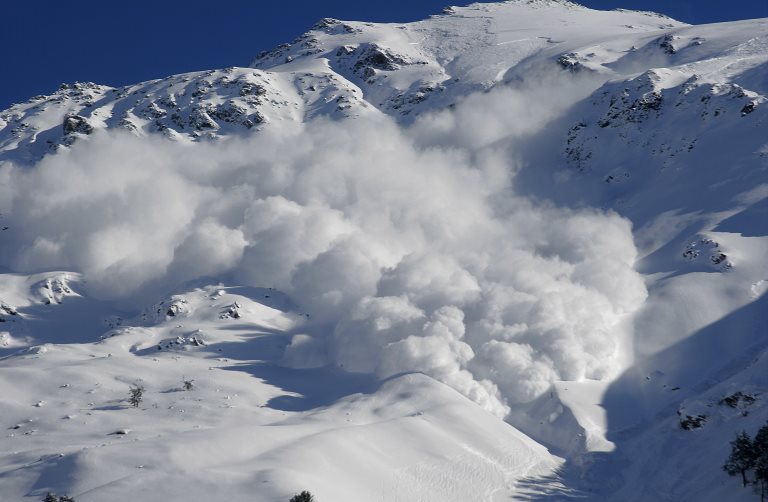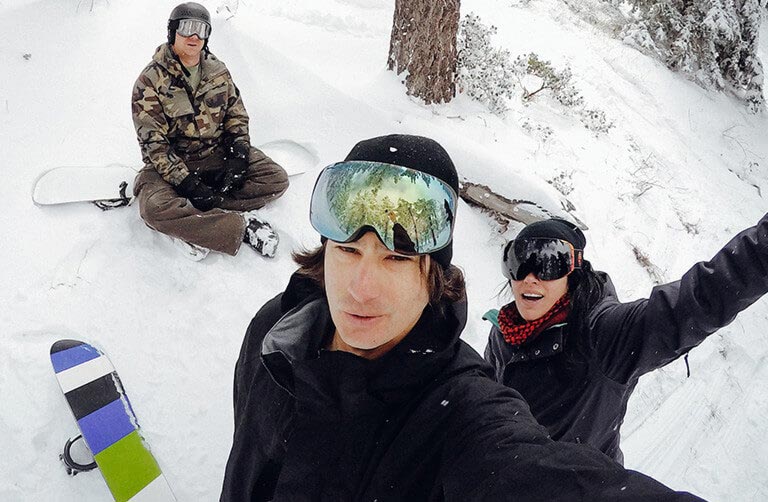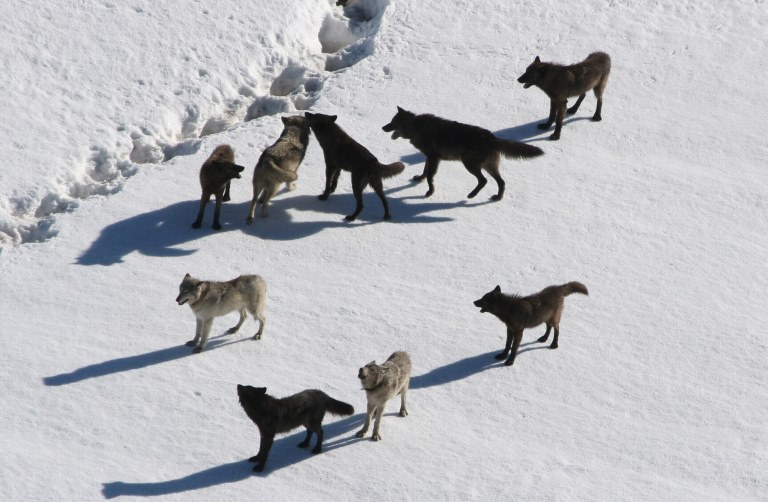6 Snow Travel Safety Tips: How to Stay Safe this Winter
Going skiing or snowboarding this winter? Be responsible on the slopes and stay safe with these tips.
 Photo © Getty Images/mbbirdy
Photo © Getty Images/mbbirdy
Winter can be a great time for travel, with visits to ski resorts, walks in beautiful alpine landscapes, and road trips through the scenic countryside blanketed in snow.
But winter brings its own hazards for travelers, from cold temperatures to icy roads, slippery slopes, and weather conditions that can rapidly change, creating safety hazards to the unprepared traveler. However, by following a few safety tips and using some planning, travelers can reduce risks and fully enjoy their winter adventures.
Skiing and snowboarding safety tips
To have a safe and comfortable time skiing or snowboarding, whether at a resort or in the backcountry, it’s important to keep these safety tips in mind:
- Check the weather: look at weather forecasts and be aware they may change quickly. Use a common weather app like 1weather or com, and also look at local forecasts, as individual mountain weather may vary from regional reports
- Dress in layers: given that mountain conditions are variable, it’ll be more comfortable and flexible to dress in layers for skiing, with a thin waterproof shell jacket with multiple warm layers underneath rather than a single thick parka.
- Follow the code: learn and obey the Skier Responsibility Code. Ski resorts around the world from Europe to Japan the U.S. and Australia and New Zealand use a common set of rules to prioritize safely on the slopes. While they may vary slightly from country to country, the main items include: the downhill skier has right of way, stay only within open areas, report all injuries, and prevent runaway equipment. Also wear a helmet, and ski terrain within your ability level.
- Hydrate and use sunscreen: skiing at high elevations means the suns rays are more powerful, so apply, and reapply sunscreen and lip protection. High and dry conditions also cause dehydration, so be sure to drink water on the slopes and refrain from overindulgence with alcohol, as high elevation makes its effects more powerful.
- Be aware of the elevation: particularly for visitors coming from sea level, the elevation of ski resorts may cause some degree of altitude sickness. Symptoms include shortness of breath, dizziness, fatigue, and in extreme circumstances, life-threatening conditions. Start slow with physical activities and know your limits, which will be reduced at altitude.
Winter driving safety tips
Winter road trips can be beautiful, whether you’re commuting up to the mountains for a ski trip, or just exploring the countryside. But winter drivers should be aware of, and prepared for, changing weather conditions and the particular challenges of driving on ice and in the snow.
- Prepare for your trip: check weather and your route in advance. Be aware of existing or potential road closures. Bring a paper map in case you are out of cell phone range. Check fuel, oil, and tire pressure levels. Rent or use a winter-appropriate vehicle (not a low-riding sports car, for example).
- Use snow tires, chains, and four-wheel drive: with snowy and icy conditions, particularly on winding mountain roads, use a four-wheel drive or all-wheel-drive vehicle, with winter-rated tires and snow chains when conditions (and highway restrictions) dictate.
- Drive Cautiously, even with chains: remember, four-wheel drive and snow tires DO NOT mean your car is invincible on icy roads. The rules of physics still apply; if you are driving too fast for the conditions, you will skid and crash, regardless of whether you have the best snow chains on the ultimate winter vehicle. And drive defensively; in popular vacation areas many visiting drivers may not have winter road experience.
- Drive with a winter emergency kit: in addition to snow chains for tires, winter road trippers should carry an emergency kit. Potential items to include would be extra food and water, a first aid kit, a warm blanket, road flares, a shovel to help dig out of a drift, an ice scraper and brush, and a bag of sand (or even kitty litter) to pour under your tires for traction your car is stuck in snow or ice.
Winter adventure safety tips
Whether you’re taking a walk on icy city sidewalks, or hiking through the arctic backcountry, you should plan ahead and take precautions for any winter adventure trip.
- Check the weather and dress properly: be aware of weather conditions before your trip! You don’t want to arrive and have to buy expensive winter coats and footwear. As in skiing, wardrobe layering flexibility, warmth and waterproofing in key for any winter outdoor activities. Fingers, toes, nose and ears are most susceptible to frostbite, so be sure your extremities are covered with proper gear. Be mindful of windchill and cover any exposed skin in extreme conditions, like in a Canadian winter.
- Be aware of backcountry snow conditions: if you’re hiking, snowmobiling, or skiing in the backcountry, look for specialized reports on avalanche conditions, and be aware of the often extreme risks. You can even take an avalanche safety course or do research to prepare for conditions and identify specific snow risks.
- Bring backcountry safety gear: if you go off the beaten track in areas at risk for avalanche, it’s essential to bring safety equipment including tracking beacons, shovels, avalanche probes, and first aid kits. A lightweight emergency blanket and hand and foot warmers should also be part of a winter safety kit.
- Keep dry: cold is bad, wet is worse for risk of hypothermia or frostbite, especially when winter camping. Wear quick-wicking fabrics such as wool (or specialized blends) rather than cotton which tends to get wet and stays wet, especially socks. Make sure your clothes are fully dried before embarking on the next day’s adventure and bring a backup set of clothing. For further protection, it can be effective to use a waterproof drybag to store spare socks and lightweight base layers, in addition to a phone and other electronics.
Related articles
Simple and flexible travel insurance
You can buy at home or while traveling, and claim online from anywhere in the world. With 150+ adventure activities covered and 24/7 emergency assistance.
Get a quote


1 Comment
Thanks for crafting the helpful and also delightful online site. I really look forward towards the information once this opportunity shows by itself! Gratitude once again for giving it up and running to the everyone!